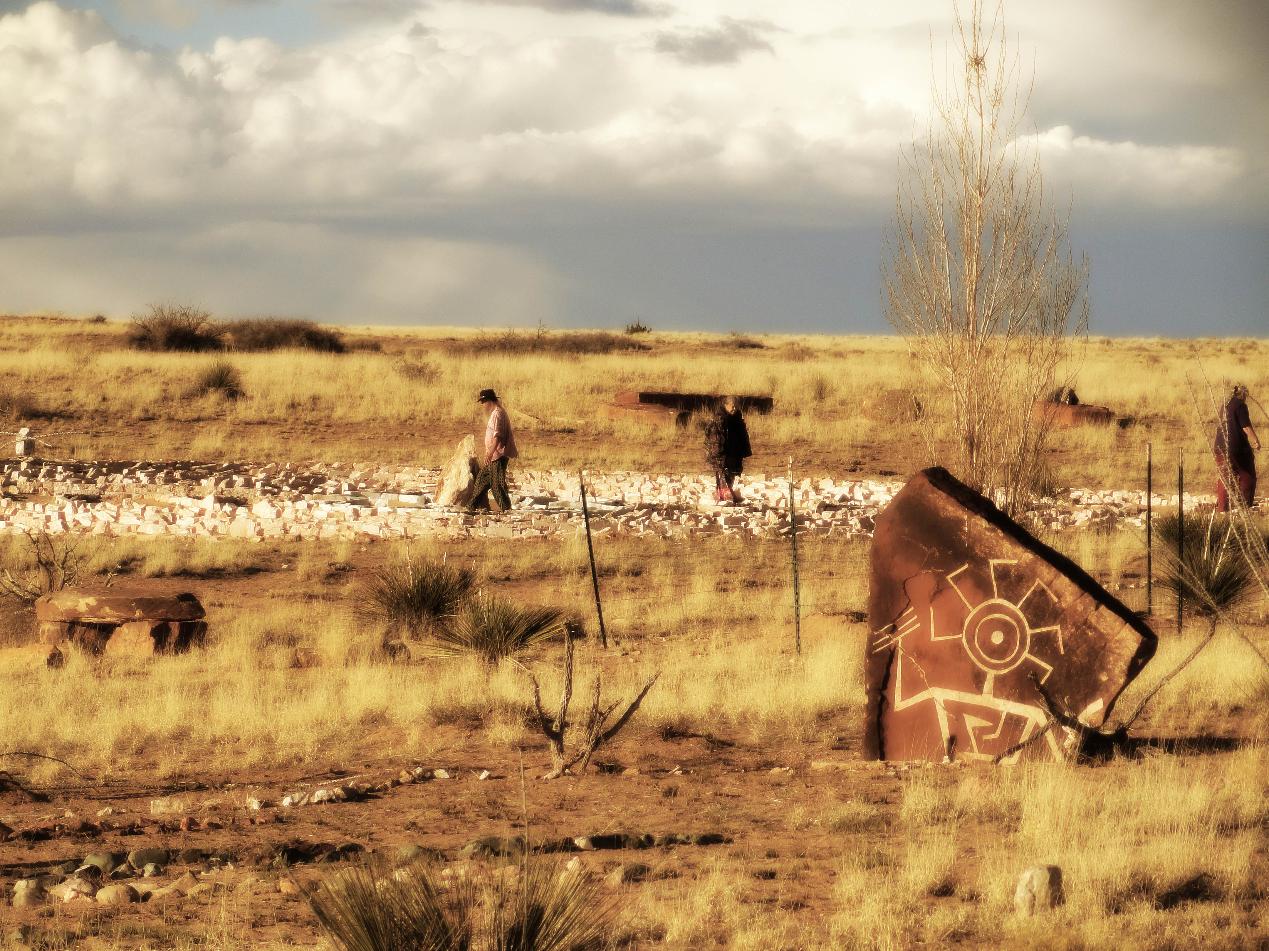Scroll down for info and Photo
If we walk into a labyrinth
If we walk into a labyrinth, we must also walk out. If we begin an action, we must also end it. If we enter into life, we must also leave it. The labyrinth pattern is a plan of how to complete the full cycle of all actions. A Theosophical interpretation of the labyrinth sees it as the pattern of our lives and of every action we take during a lifetime. To walk the labyrinth from start to end is to live a Theosophical life fully and successful.
What is a Labyrinth?
A labyrinth is a path which leads, via a circuitous route, to the center of an intricate design and back out again. A labyrinth’s route is unicursal; that is, it has only a single path. Unlike a maze, a labyrinth is designed for ease of navigation, and it is impossible to get lost within one. Labyrinths are ancient human symbols known to go back at least 3500 years and probably much older. They appeared on most inhabited continents in prehistory, with examples known from North & South America, Africa, Asia and across Europe from the Mediterranean to Scandinavia. The labyrinth symbol was incorporated into the floors of the great Gothic pilgrimage cathedrals of France in the twelfth & thirteenth centuries. The most famous extant design is the example in the nave floor of the Cathedral of Notre Dame de Chartres outside of Paris. This labyrinth was built of honey colored limestone with marble lines around the year 1200 and is now over 800 years.
Why Do We Walk Labyrinths?
A labyrinth is not a maze, but a walking meditation device with a single winding path from the edge to the center. There are no tricks, choices or dead ends in a labyrinth walk. The same path is used to return to the outside. Combining a number of even older symbols, including the circle, spiral and meander, the labyrinth represents the journey inward to our own true selves and back out into the everyday world.Walking a labyrinth is a right brain activity (creative, intuitive, imaginative), and can induce or enhance a contemplative or meditative state of mind. It is a tool which can clear the mind, calm our anxieties during periods of transition and stress, guide healing, deepen self-knowledge, enhance creativity, allow for reconciliation, restore feelings of belonging to a community, and lead to personal and spiritual growth.
A prayer labyrinth is a labyrinth used to facilitate prayer, meditation, spiritual transformation, and/or global unity. The most famous prayer labyrinths today include an ancient one in the cathedral of Chartres, France, another in the cathedral of Duomo di Siena, Tuscany; and two maintained by Grace Cathedral, an Episcopal church in San Francisco. While prayer labyrinths have been used in Catholic cathedrals for centuries, the past decade has seen resurgence in their popularity, especially within the Emergent Church and among New Age groups and neo-pagans.For many walkers the labyrinth becomes a metaphor for the journey of life: although full of twists and turns, each of us is on a single path through his or her life, and yet each person's journey is a separate and distinct qualitative experience. In walking labyrinths, modern seekers are emulating and recapturing the pilgrimage tradition of many ancient faiths.
